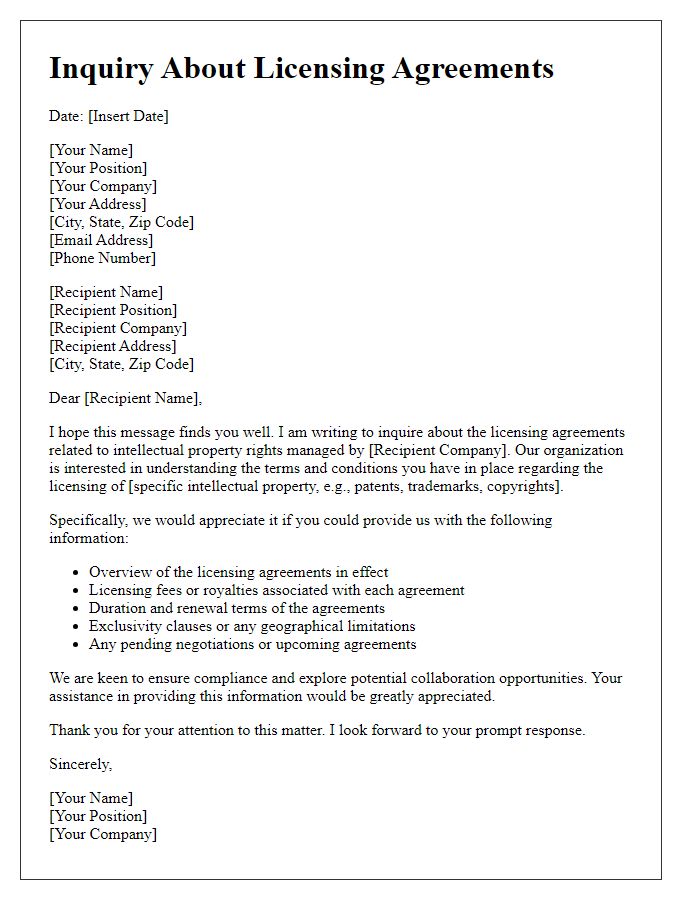Are you curious about how to protect your innovative ideas and creations? Understanding intellectual property rights can be a game changer for inventors, artists, and businesses alike. In this article, we'll break down the essentials of intellectual property, explore different types of protections available, and provide you with practical steps to safeguard your work. So, let's dive in and uncover the key aspects of intellectual property rights together!

Clear identification of the intellectual property in question
Intellectual property constitutes legal rights protecting creations of the mind, including inventions, literary and artistic works, designs, symbols, names, and images used in commerce. Specific types of intellectual property encompass patents, trademarks, copyrights, and trade secrets. For instance, a patent may secure an innovative product like a pharmaceutical compound, while a trademark can protect brand identifiers like logos associated with companies such as Apple Inc. or Coca-Cola. Copyright safeguards creative works, such as musical compositions or software code, ensuring creators control the use and distribution of their material. Trade secrets involve confidential business information, such as Coca-Cola's unique recipe, vital for maintaining competitive advantage. Proper identification of the intellectual property involved is crucial for understanding the applicable legal protections and enforcement mechanisms.
Detailed explanation of the inquiry purpose
A comprehensive inquiry into intellectual property rights (IPR) serves to understand the legal protections granted to creators and inventors for their original works. This explanation aims to delve into myriad aspects, including patents, copyrights, trademarks, and trade secrets, each with specific legal ramifications and application processes. The inquiry will explore the significance of safeguarding intellectual property in various sectors such as technology, entertainment, and pharmaceuticals, while examining the potential economic impacts on innovation and competitive advantage. Furthermore, the examination will cover international treaties, like the Agreement on Trade-Related Aspects of Intellectual Property Rights (TRIPS), which seek to harmonize IPR laws across member countries, ensuring creators retain ownership and control over their intellectual contributions. Understanding these elements is crucial for navigating the complexities of IPR in today's global marketplace.
Reference to relevant legal or regulatory frameworks
Intellectual property (IP) rights encompass a range of legal protections designed to safeguard creations of the mind, including inventions, literary and artistic works, designs, symbols, names, and images used in commerce. The World Intellectual Property Organization (WIPO) oversees international treaties such as the Agreement on Trade-Related Aspects of Intellectual Property Rights (TRIPS), which establishes minimum standards for IP protection and enforcement among member countries. National legislation, such as the United States Patent and Trademark Office (USPTO) guidelines, provides specific frameworks governing patents, trademarks, and copyrights. Relevant laws like the Copyright Act of 1976 and the Lanham Act outline the rights and remedies available for infringement within the U.S. Understanding these legal structures is vital for navigating the intricate landscape of IP rights and ensuring compliance with both domestic and international regulations.
Contact details for follow-up communication
Intellectual property rights inquiries often involve complex issues related to patents, trademarks, copyrights, and trade secrets, particularly in industries such as technology, pharmaceuticals, and entertainment. Legal experts, such as intellectual property attorneys, provide guidance to individuals and businesses facing potential infringements or seeking to protect their innovations. Follow-up communication can be facilitated through various channels, including email, phone calls, or formal letters, ensuring clear documentation of all correspondence. Providing accurate contact details enhances the efficiency of these discussions, allowing timely responses and resolution of issues. Including specific email addresses, phone numbers, and office addresses ensures that inquiries reach the appropriate legal representatives or firms, facilitating ongoing dialogue in matters of intellectual property protection and enforcement.
Request for specific information or action
Intellectual property rights play a critical role in protecting innovations and creations, such as patents for inventions or copyrights for artistic works. When seeking clarification on licensing agreements or infringement claims, individuals or businesses may benefit from formally requesting specific documents. This might include records of previous registrations, related agreements, or existing disputes documented in the United States Patent and Trademark Office (USPTO). Additionally, stating the potential impact on ongoing projects or revenue streams is vital. Clear communication regarding timelines for responses can enhance the efficiency of these inquiries and ensure all parties involved understand their responsibilities.
Letter Template For Intellectual Property Rights Inquiry Samples
Letter template of intellectual property rights inquiry for copyright concerns.

Letter template of intellectual property rights inquiry regarding trademark issues.

Letter template of intellectual property rights inquiry for patent clarification.

Letter template of intellectual property rights inquiry about licensing agreements.

Letter template of intellectual property rights inquiry for trade secret protection.

Letter template of intellectual property rights inquiry related to infringement claims.

Letter template of intellectual property rights inquiry for compliance verification.

Letter template of intellectual property rights inquiry on digital content usage.

Letter template of intellectual property rights inquiry regarding international protections.





Comments